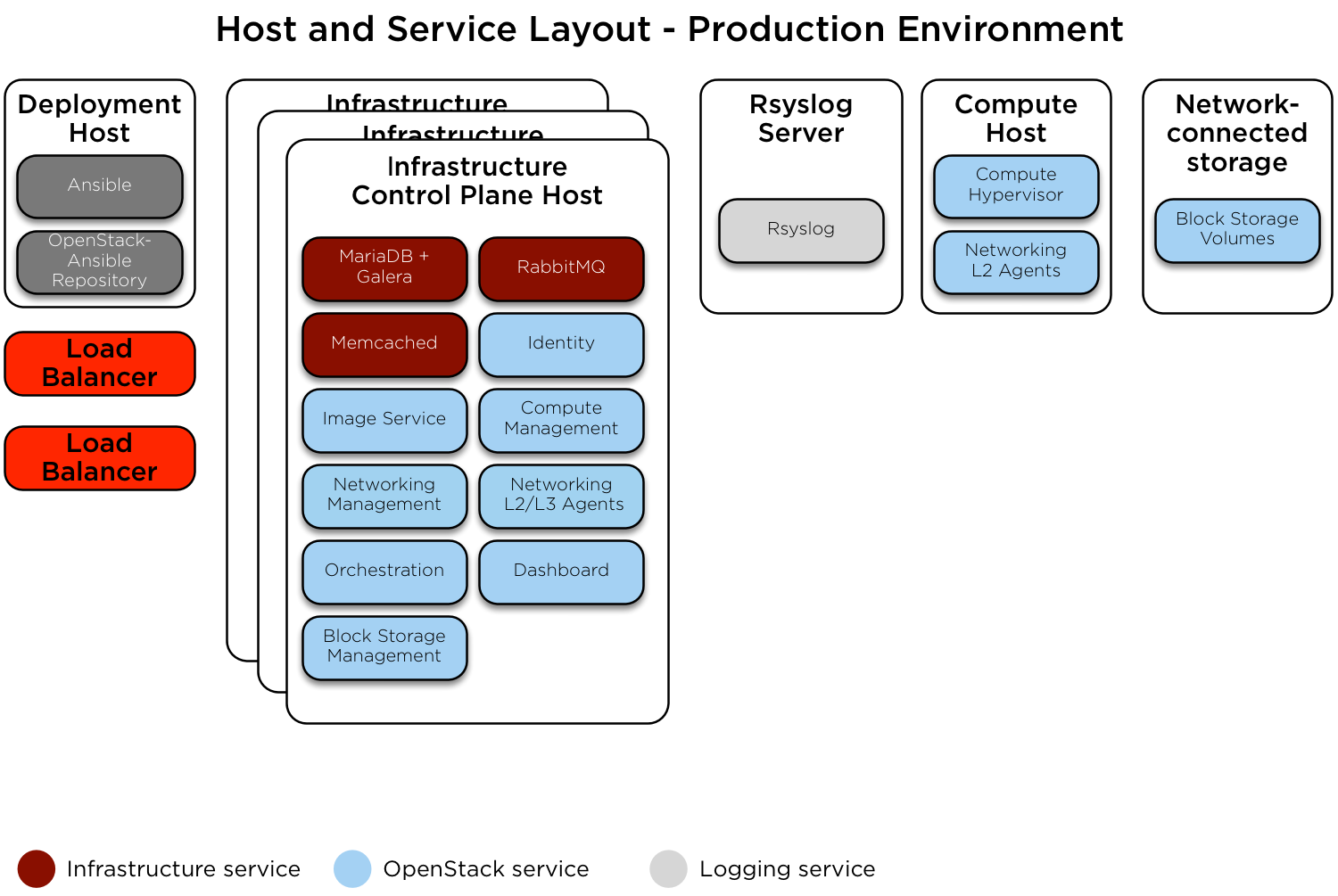In some environments, a single container, storage, or tunnel network may not be applicable to every host. Each configured provider_network would need to be limited to a particular subset of hosts and the host var keys within the inventory for container_address, storage_address, and tunnel_address will need to be maintained since they're specifically required by various playbooks. Add two new options for configuring provider_networks, 'reference_group' and 'address_prefix'. 'reference_group' for providing a group name that any host must be a member of, in addition to any of the groups listed in 'group_binds', for the network to be applied. 'address_prefix' for overriding the name of the key created for each IP address allocated by a cidr_network. By default, this key is named 'cidr_network'_address, where 'cidr_network' is the given 'ip_from_q' option for a provider network. Closes-Bug: 1650356 Change-Id: Ia7f3119f0affc4fb6be97ca788ca3b46096b82a8
6.7 KiB
Appendix C: Example layer 3 routed environment configuration
Introduction
This appendix describes an example production environment for a working OpenStack-Ansible (OSA) deployment with high availability services where provider networks and connectivity between physical machines are routed (layer 3).
This example environment has the following characteristics:
- Three infrastructure (control plane) hosts
- Two compute hosts
- One NFS storage device
- One log aggregation host
- Multiple Network Interface Cards (NIC) configured as bonded pairs for each host
- Full compute kit with the Telemetry service (ceilometer) included, with NFS configured as a storage backend for the Image (glance), and Block Storage (cinder) services
- Static routes are added to allow communication between the Management, Tunnel, and Storage Networks of each pod. The gateway address is the first usable address within each network's subnet.
Network configuration
Network CIDR/VLAN assignments
The following CIDR assignments are used for this environment.
| Network | CIDR | VLAN |
|---|---|---|
| POD 1 Management Network | 172.29.236.0/24 |
|
| POD 1 Tunnel (VXLAN) Network | 172.29.237.0/24 |
|
| POD 1 Storage Network | 172.29.238.0/24 |
|
| POD 2 Management Network | 172.29.239.0/24 |
|
| POD 2 Tunnel (VXLAN) Network | 172.29.240.0/24 |
|
| POD 2 Storage Network | 172.29.241.0/24 |
|
| POD 3 Management Network | 172.29.242.0/24 |
|
| POD 3 Tunnel (VXLAN) Network | 172.29.243.0/24 |
|
| POD 3 Storage Network | 172.29.244.0/24 |
|
| POD 4 Management Network | 172.29.245.0/24 |
|
| POD 4 Tunnel (VXLAN) Network | 172.29.246.0/24 |
|
| POD 4 Storage Network | 172.29.247.0/24 |
|
IP assignments
The following host name and IP address assignments are used for this environment.
| Host name | Management IP | Tunnel (VxLAN) IP | Storage IP |
|---|---|---|---|
| lb_vip_address | 172.29.236.9 | ||
| infra1 | 172.29.236.10 | ||
| infra2 | 172.29.239.10 | ||
| infra3 | 172.29.242.10 | ||
| log1 | 172.29.236.11 | ||
| NFS Storage | 172.29.244.15 | ||
| compute1 | 172.29.245.10 | 172.29.246.10 | 172.29.247.10 |
| compute2 | 172.29.245.11 | 172.29.246.11 | 172.29.247.11 |
Host network configuration
Each host will require the correct network bridges to be implemented.
The following is the /etc/network/interfaces file for
infra1.
Note
If your environment does not have eth0, but instead has
p1p1 or some other interface name, ensure that all
references to eth0 in all configuration files are replaced
with the appropriate name. The same applies to additional network
interfaces.
../../etc/network/interfaces.d/openstack_interface.cfg.pod.example
Deployment configuration
Environment layout
The /etc/openstack_deploy/openstack_user_config.yml file
defines the environment layout.
For each pod, a group will need to be defined containing all hosts within that pod.
Within defined provider networks, address_prefix is used
to override the prefix of the key added to each host that contains IP
address information. This should usually be one of either
container, tunnel, or storage.
reference_group contains the name of a defined pod group
and is used to limit the scope of each provider network to that
group.
Static routes are added to allow communication of provider networks between pods.
The following configuration describes the layout for this environment.
../../etc/openstack_deploy/openstack_user_config.yml.pod.example
Environment customizations
The optionally deployed files in
/etc/openstack_deploy/env.d allow the customization of
Ansible groups. This allows the deployer to set whether the services
will run in a container (the default), or on the host (on metal).
For this environment, the cinder-volume runs in a
container on the infrastructure hosts. To achieve this, implement
/etc/openstack_deploy/env.d/cinder.yml with the following
content:
../../etc/openstack_deploy/env.d/cinder-volume.yml.container.example
User variables
The /etc/openstack_deploy/user_variables.yml file
defines the global overrides for the default variables.
For this environment, implement the load balancer on the
infrastructure hosts. Ensure that keepalived is also configured with
HAProxy in /etc/openstack_deploy/user_variables.yml with
the following content.
../../etc/openstack_deploy/user_variables.yml.prod.example
